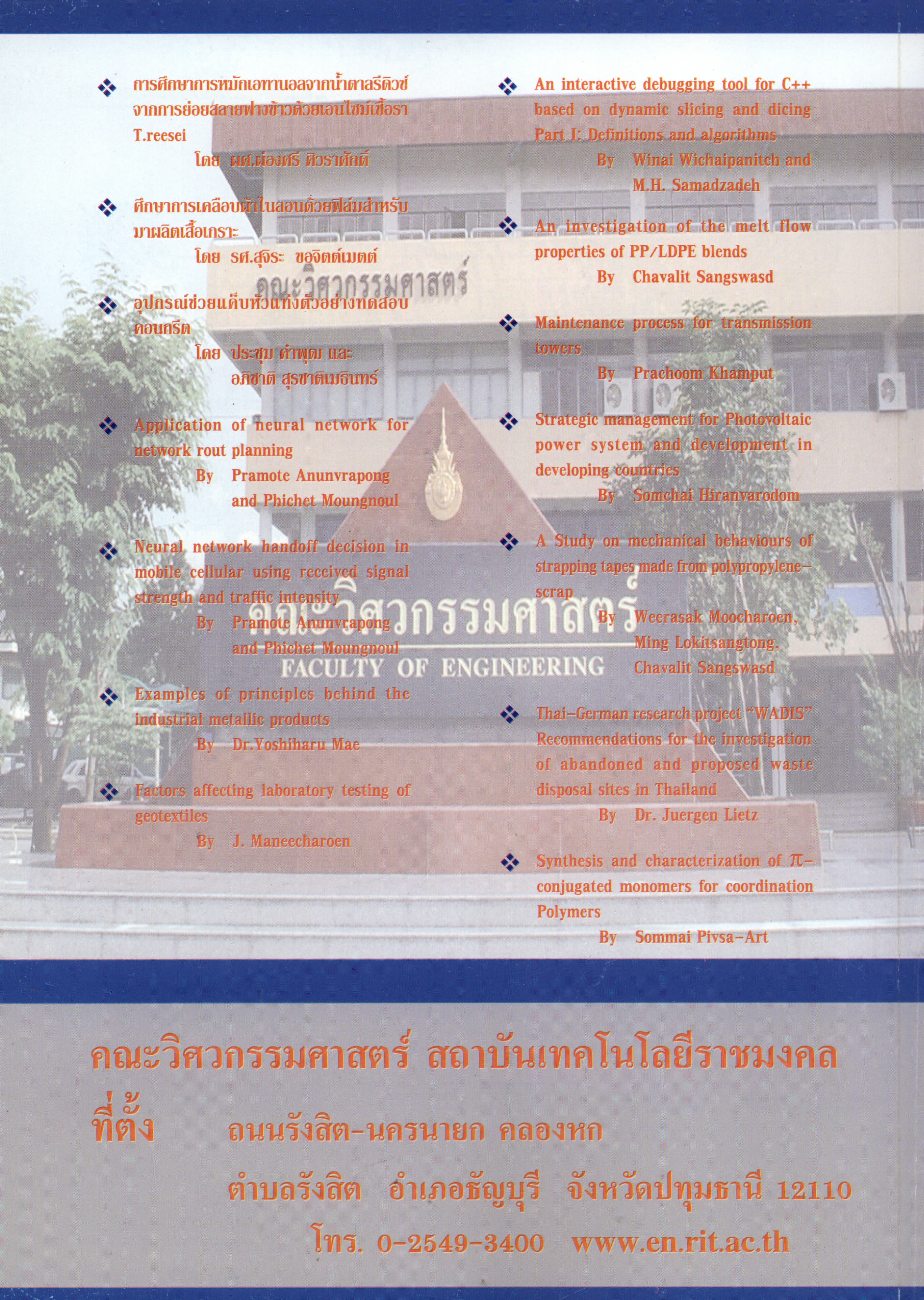The Study of Ethanol Fermentation from Reducing Sugar of Rice Straws by Enzymatic Hydrolysis with T. reesei
Main Article Content
Abstract
The study of rice straws enzymatic hydrolysis by using with T. reesei TISTR 3080 was to increase quantity of reducing sugar. Several conditions of enzymatic hydrolysis in rice straws cellulose were utilized. And also this study was to find the yeast concentrations, which were used for ethanol fermentation from reducing sugar. Cellulose in rice straws was pretreated with 2 M sodium hydroxide. This method provided increasing cellulose from 65.36 gig substrate to 99.34 gig substrate. The ratio of pretreated rice straws cellulose weight to production medium volume was 1 :20 which was hydrolyzed with enzyme from T. reesei TISTR 3080 by inoculating only fungi, adjusted pH until 5.3, shaking at room temperature (31°C) with speed 120 rpm for 1 hour and incubated further without shaking for 1 day. The average obtained reducing sugars were 0.2771 gig substrate at pH 7.4. These reducing sugars were fermented with 15 0/0 (v/v) of S. cerevisiae TISTR 5339 at initial pH 5 and shaking incubated at room temperature (31degree Celsius), 120 rpm in anaerobic system for 1 day. The average ethanol quantity form fermentation was 0.1307 gig substrate.
Article Details
The manuscript, information, content, picture and so forth which were published on Frontiers in engineering innovation research has been a copyright of this journal only. There is not allow anyone or any organize to duplicate all content or some document for unethical publication.
References
Rice Straws and Bagasse" in ISAF XVI International Symposium on Alcohol Fuels The Role of Alcohol Fuels in Meeting the Energy, Environmental and Economic Needs of the 21 s Century.pp. 2002-FT-17. Bangkok: National Metal and Materials Technology Center (MTEC).
[2] Tsao, G.T., Ladish, M.R., Ladish, C.,HUS, T.A., Dale, B. and Chout, T.Ethanol and Chemical from Cellulose.Processing of the International Symposium: Alternative sources of energy for agriculture. Food and Fertilizer Technology Center for the Asian and Pasific Region, 1985, pp. 117-183.
[3] Austin, George T. 1984. Chemical Process Industries. 5 th ed. Singapore:McGraw-Hill.
[4] Sitton, O.C., Foutch, G.L., Book, N.L. and Gaddy, J.L. 1979."Ethanol from agriculture residues." Process Biochemistry. Vol.4 no. 9:7-10.


